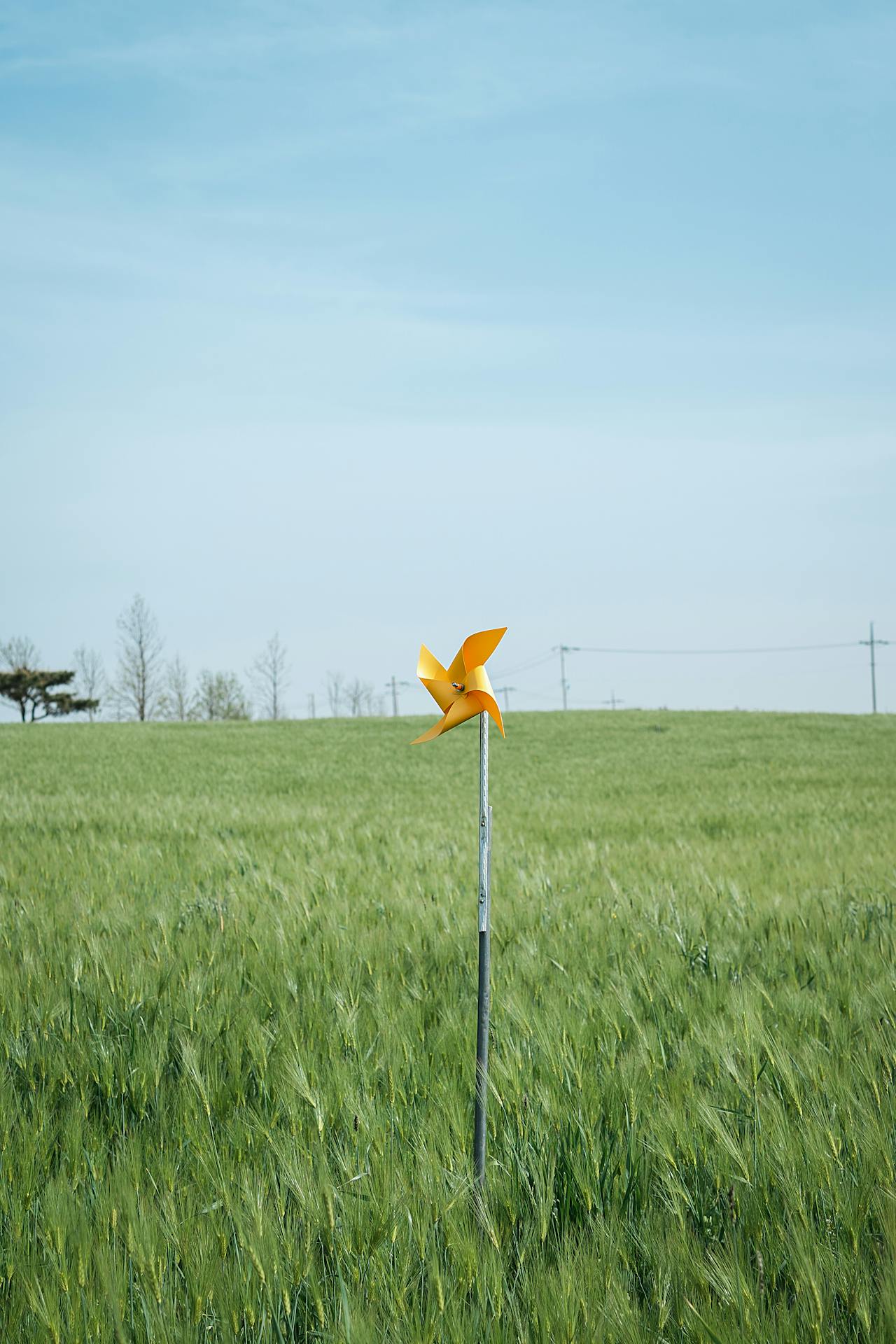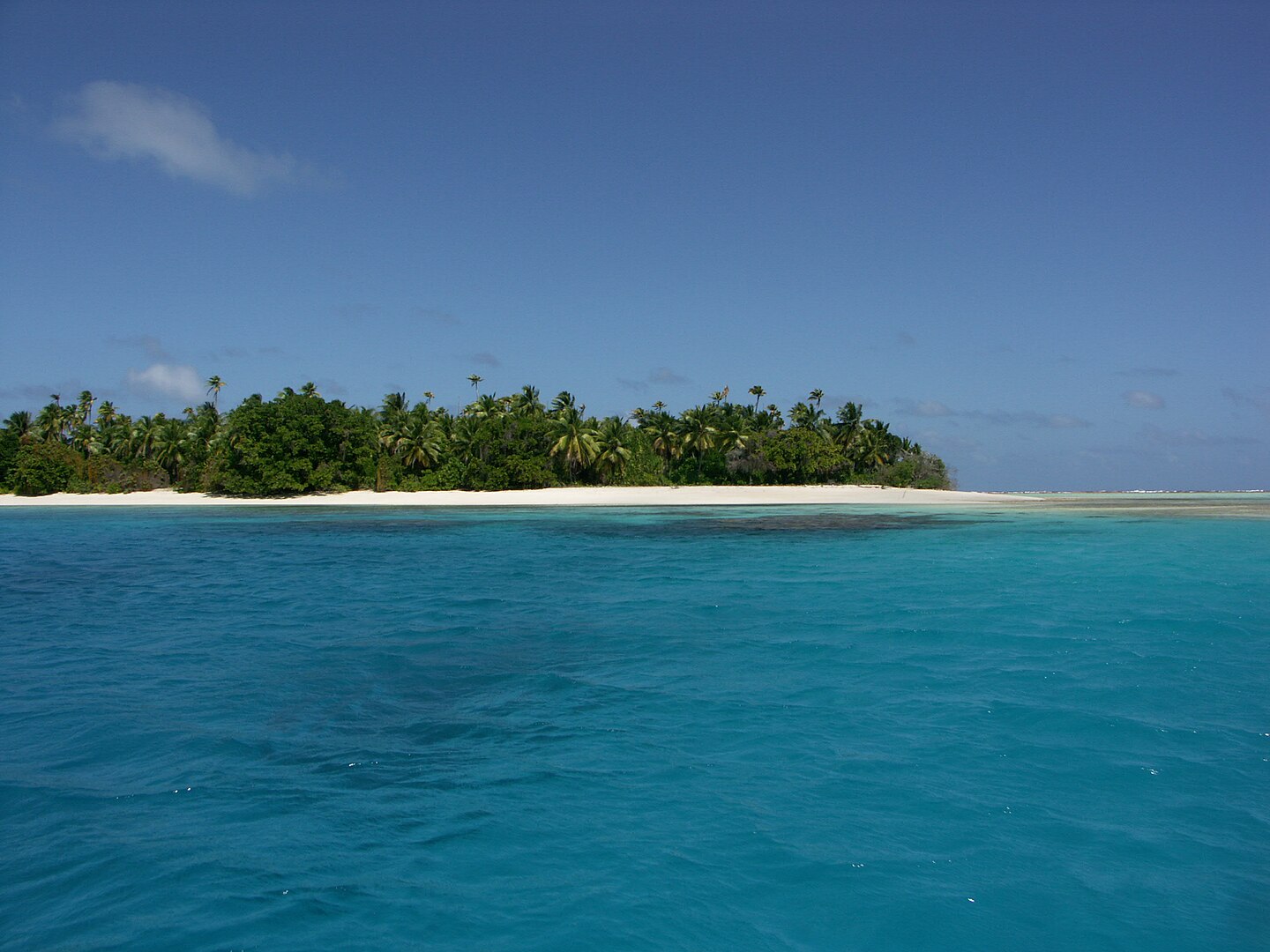Why have you chosen to focus on oceans?
When I first started studying both ceramics and marine biology as a high school student in San Francisco, sculpture provided a way for me to visualize the creatures that I was studying in three-dimensional space. I am a visual learner, and could better understand the anatomy and behavior of coral reef organisms by sculpting them. My work began to evolve from anatomical studies into more large-scale, representative pieces when, as a student at Skidmore College, I visited the Great Barrier Reef for nine months during my semester abroad at James Cook University in Townsville, Australia. While there, I went scuba diving among some of the most beautiful and healthy reefs in the world, and simultaneously took a series of marine biology classes that emphasized the threats to coral reefs—namely from climate change, ocean acidification, overfishing, and pollution. The understanding that something as exquisite and otherworldly as Australia’s coral reefs could be deteriorating so rapidly because of human activities was heartbreaking and motivated me to use my sculptural work for more than my personal interests in reef ecology.

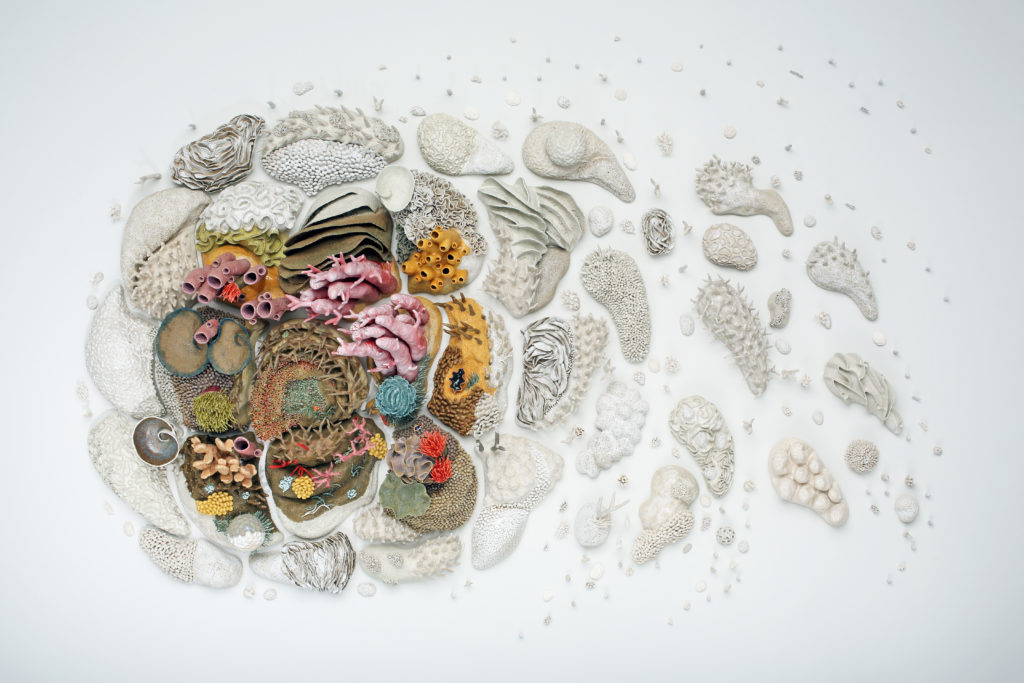

picture from Our Changing SeasIII - Photo credits: ArthurEvans_for_TangMuseum
When I had the opportunity to study ceramic sculpture at the Rhode Island School of Design as a Master of Arts candidate in environmental studies at Brown University, I knew that was my chance to create a work of art that could make a real impact. I created Our Changing Seas I: A coral reef story as the culmination of my thesis work. The piece—a five-meter tall by three-meter wide hand-built ceramic coral reef wall installation—debuted at the headquarters of the National Oceanic and Atmospheric Administration (NOAA) within the Department of Commerce in downtown Washington, D.C. in April 2011. This exhibition aimed to inspire policy change for coral reef conservation. It now resides at the headquarters of the American Association for the Advancement of Science, which publishes Science Magazine, and is visible to the public. My Our Changing Seas series continues to this day, as I am currently completing the fourth, fifth and sixth works in the series.
How do you see art contributing to the spread of knowledge about oceans and the changes they are facing in the forthcoming years?
We protect what we care about, and we care about what we know and understand. Art has a unique power to influence how we understand our lives and our planet and can make us connect emotionally to concepts or environments that we would otherwise ignore. Art can bring the plight of coral reefs, for example, above the surface, and into view, making us appreciate their fragile beauty and empathize with the threats they face in ways that drive us to change our behavior.
I think art affects us emotionally in a way that scientific data often struggle to. When people look at a graph showing rates of global warming over a period of time, that information means so much less on a personal and emotional level than seeing a work of art that translates those data in a visual, aesthetically powerful way. Art can make us see the world differently and can make us connect in unexpected ways to the natural environment that we rely on for life and that we impact every day. Art has huge power to inspire people to change their lifestyle choices and become more aware of how they’re connected to everything else.
As a ceramic sculptor with a background in environmental science, I believe art can be a powerful communication tool to help us better understand the natural world and remind us what we stand to lose to climate change if we do not urgently enact solutions. Nearly all of my work to date explores the impacts of climate change on the ocean—the cradle of life on Earth. Works of art can simultaneously spark viewers’ interest in the beauty of the natural world, highlight the threats we impose on it through our greenhouse gas emissions, and inspire a sense of hope that through urgent action humanity can still bring climate change under control.
How would you describe your own art?
Coral reefs and the entire marine environment are like alien worlds to many people. They are out of sight, out of mind. We are so land-centric that many of us don’t know how we rely on the sea for a hospitable climate, for food, water, or even the air we breathe (over half of the breaths we take contain oxygen generated by marine plankton). Coral reefs provide habitat to 25 percent of marine species yet cover less than 0.2 percent of the seafloor. They are vital to the health of the ocean, which in turn gives us life. But because most people never get the chance to see under the ocean’s surface, or travel to places where healthy coral reefs still thrive, they may never understand the beauty of coral reefs or the value of protecting them, until it’s too late. That’s why I, as someone who has been fortunate enough to see healthy coral reefs in all their splendor, feel compelled to share that beauty with others to inspire them to care.
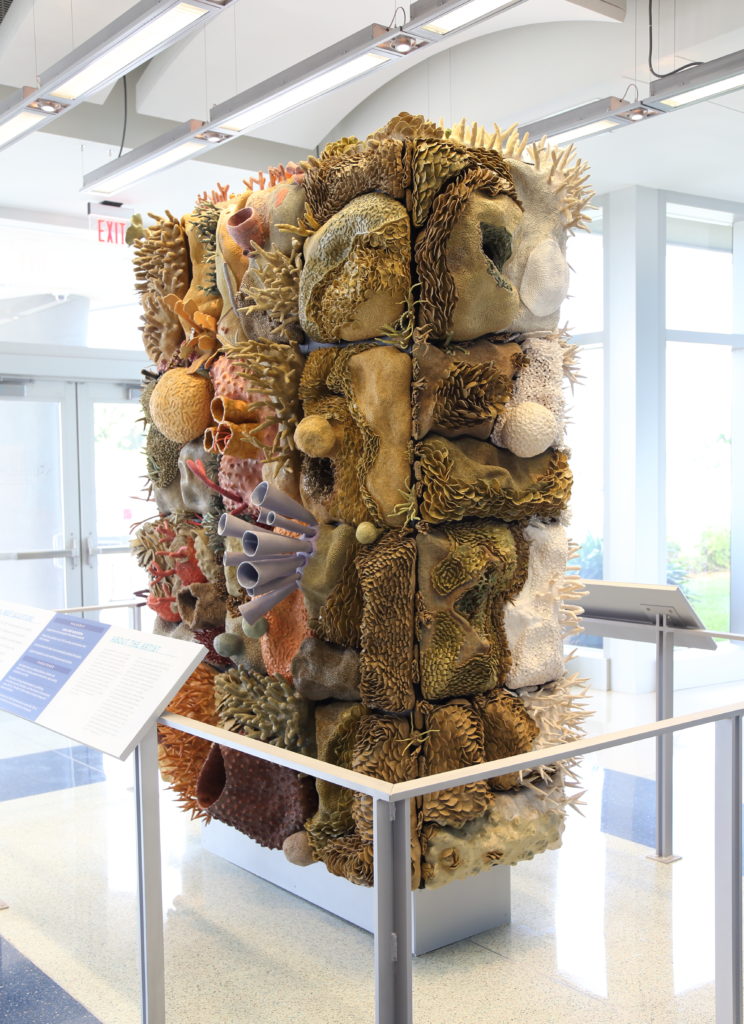

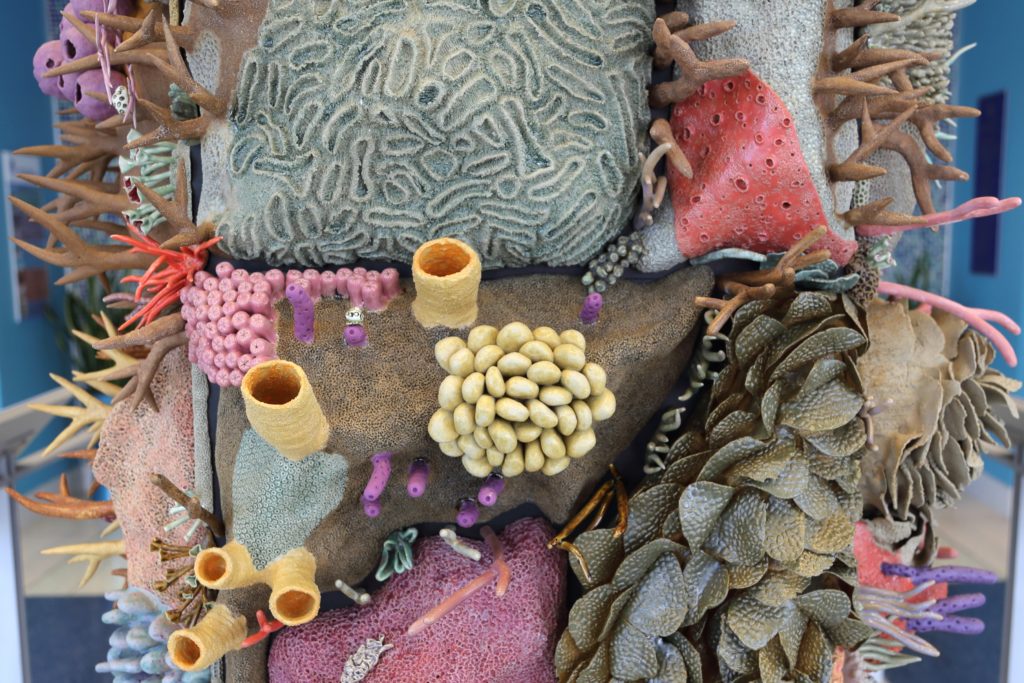
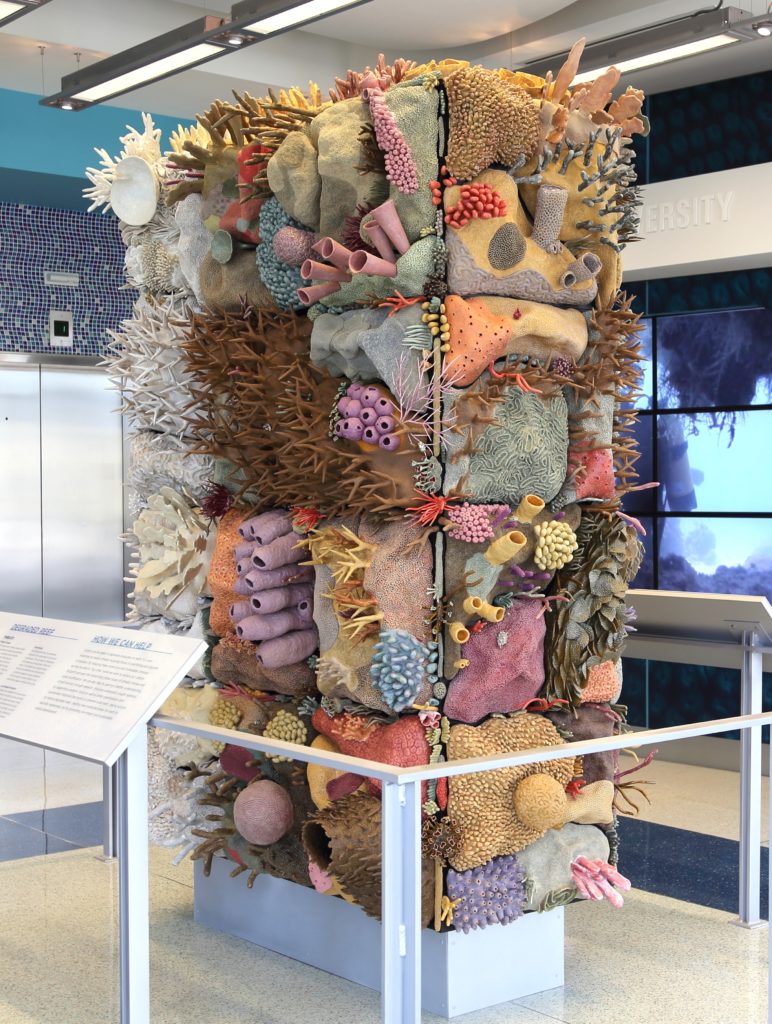
Pictures taken from OurChangingSeasII Photo©CourtneyMattison
I want viewers to feel the way I do when I slowly hover over a coral reef while scuba diving, discovering tiny creatures with fascinating colors and details in every crevice, and feeling as though they’re among precious—and very delicate—life forms. I want people to feel inspired and curious, and then I want them to understand how tragic it would be to lose these ecosystems and feel empowered to help.
It feels essential that the medium of my work be ceramic, as calcium carbonate is both the substance of coral skeletons and a common ceramic glaze ingredient. Not only does the chemical structure of my work parallel that of a natural reef, but brittle porcelain anemone tentacles and coral branches break easily if improperly handled, similar to the delicate bodies of living reef organisms. This shared sense of fragility is fundamental to the message of my work. I hope that the idea of one small person creating such huge, intricately detailed ceramic sculptural works causes viewers to realize just how important reefs are to me, and become curious enough to learn more about how the ocean is important to them.
I don’t want my work to be too literal because the point is to evoke sparks of inspiration and curiosity, not just teach people what a particular species of sea sponge looks like. I believe that if people see evidence of my hands in the work they may relate more closely to the concepts the work conveys and perhaps even feel a deeper personal connection to ocean ecosystems. That’s why I like that my fingerprints are present in each piece I make, and that I can invent my own “hybrid species” of corals, sponges, anemones and other critters instead of trying to construct taxonomically and anatomically accurate dioramas.




